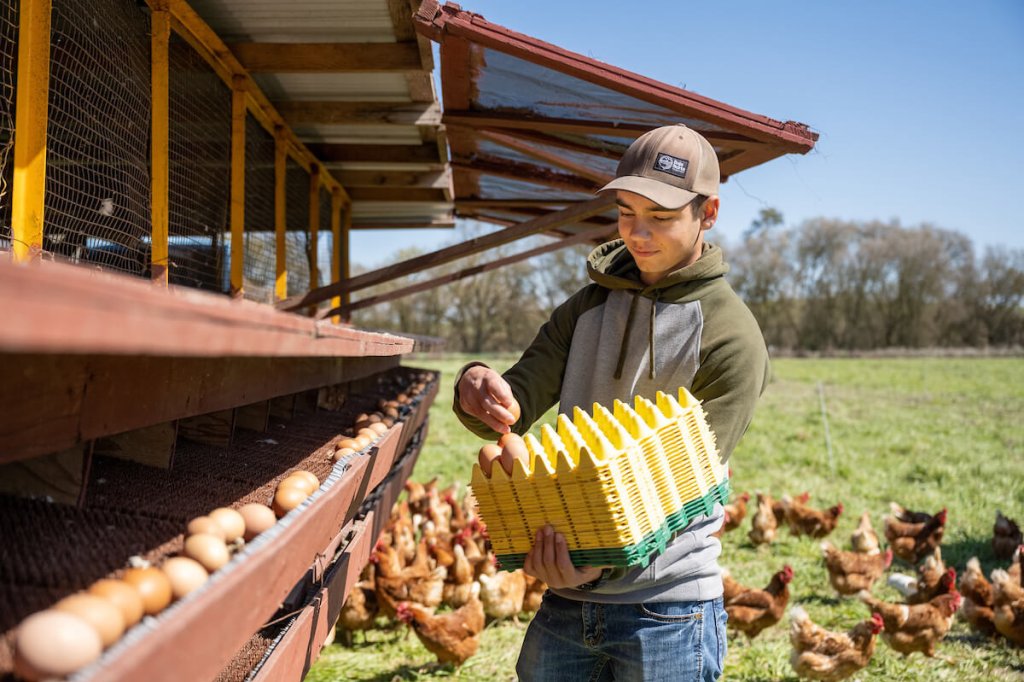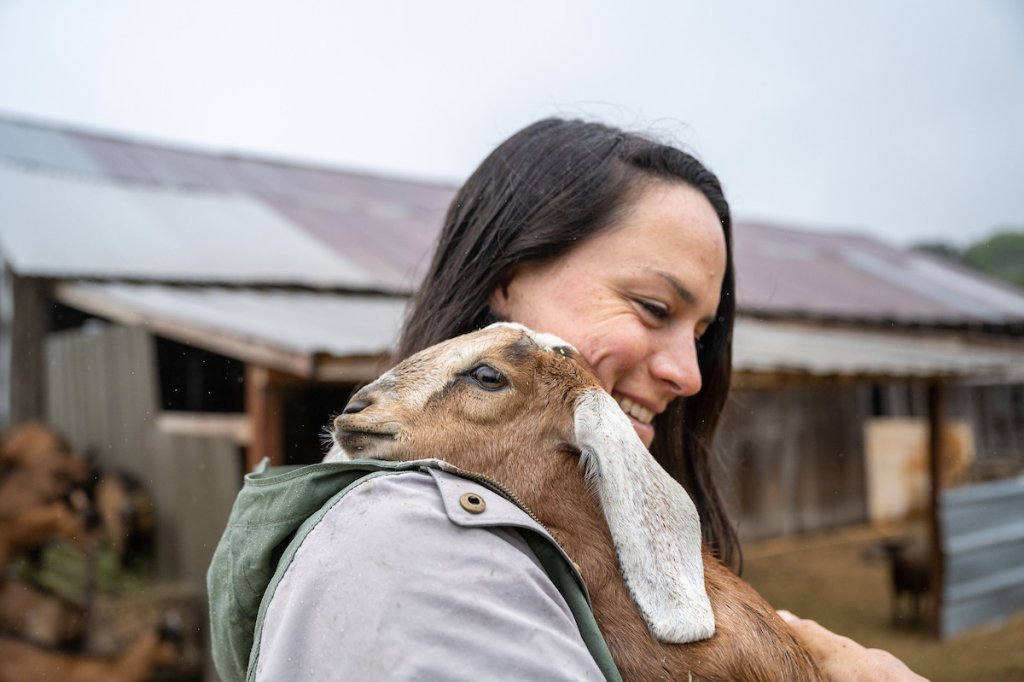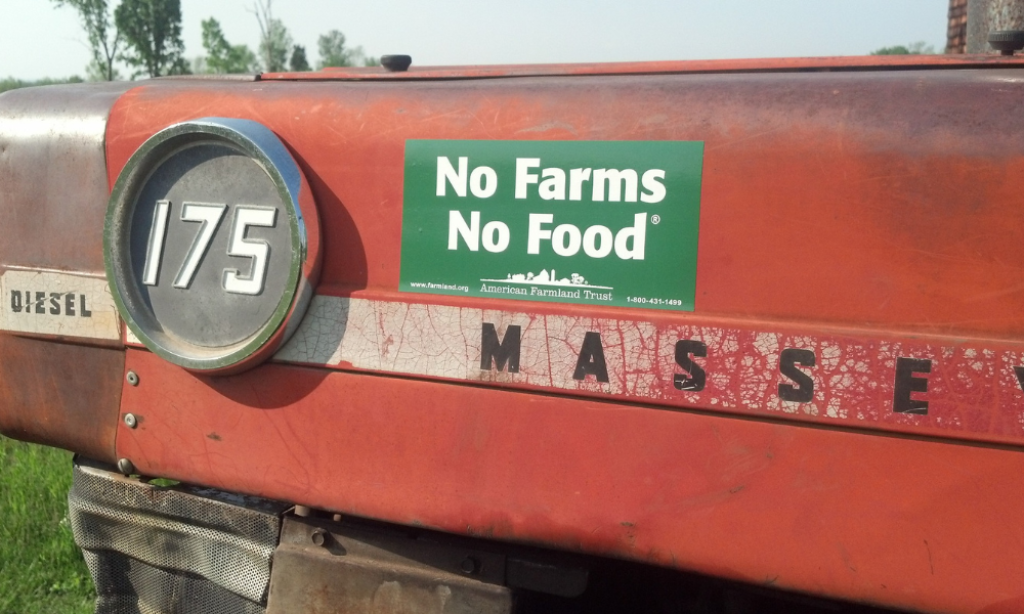What’s at stake when we pave over, fragment and otherwise fail to protect Kentucky’s farmland from the disruptions of development?
American Farmland Trust’s new report demonstrates how developing farmland puts food security, the environment and our way of life in jeopardy.
5/20/2020, WASHINGTON, DC—Millions of acres of America’s agricultural land were developed or converted to uses that threaten farming between 2001 and 2016, according to “Farms Under Threat: The State of the States,” a new report by American Farmland Trust. The report’s Agricultural Land Protection Scorecard is the first-ever state-by-state analysis of policies that respond to the development threats to farmland and ranchland, showing that every state can, and must, do more to protect their irreplaceable agricultural resources.
“The State of the States” report shows the extent, location, and quality of each state’s agricultural land and tracks how much of it has been converted in each state using the newest data and the most cutting-edge methods. The Agricultural Land Protection Scorecard analyzes six programs and policies that are key to securing a sufficient and suitable base of agricultural land in each state and highlights states’ efforts to retain agricultural land for future generations. It offers a breakthrough tool for accelerating state efforts to make sure farmland is available to produce food, support jobs and the economy, provide essential environmental services, and help mitigate and buffer the impacts of climate change.
Kentucky’s farms are under threat, with its best land succumbing to development.
The report found that the threat in Kentucky is very severe, and despite state action the response is not keeping up with the march of development. Between 2001 and 2016, 265,000 acres of agricultural land were developed or compromised, 120,000 acres of which were “Nationally Significant,” or land best suited for growing food and crops.
“Kentucky’s farms are under some of the greatest threats of any state in the nation,” said Billy Van Pelt II, AFT senior director of external relations. “This report identifies the urgent need for action to protect this land that is critical for Kentucky’s agricultural economy and its ability to grow food and other crops. We’ve all witnessed the impacts of empty grocery store shelves in recent months—we must be vigilant in protecting our farms and ensuring that our food system is more secure and resilient.”
The hot spots for development are around Bowling Green, Elizabethtown, Georgetown, Louisville and Richmond. However, the threat is more than just urban sprawl. Kentucky’s agricultural land is disproportionately threatened by a new, more insidious kind of development that AFT identified in this research: low-density residential, or LDR, land use.
Seventy-seven percent of the land developed or compromised in Kentucky fell into this category. LDR is insidious because it is not always immediately visible to communities and policymakers and therefore has yet to provoke a policy response. In Kentucky, LDR is 14 times more likely to be converted to urban and highly developed land use than other agricultural land.
LDR land use compromises opportunities for farming and ranching, making it difficult for farmers to get into their fields or travel between fields. New residents not used to living next to agricultural operations often complain about farm equipment on roads or odors related to farming. Retailers such as grain and equipment dealers, on which farmers rely, are often pushed out. Farmers can be tempted to sell out for financial reasons, or because farming just becomes too hard in the circumstances. And lastly—but importantly—as older farmers near retirement they sell their properties, too often to non-farmers. This means that new and beginning farmers have a hard time finding land, threatening the very future of agriculture. More often than not, the land prices in these areas have been driven up by the encroaching development, making it impossible for new farmers to afford to buy a farm.
Committed state action is an essential response to the loss of farmland and ranchland. Pursuing multiple approaches and linking them together is the most effective path. Kentucky ranked in the third quartile of states in taking action to protect farmland, according to the Agricultural Land Protection Scorecard.
Van Pelt added, “AFT appreciates the decades of work done by our land trust partner in Kentucky, Bluegrass Land Conservancy, and we are also grateful for the significant investments made by our Purchase of Agricultural Conservation Easement and our Purchase of Development Rights program partners. However, in light of the report, we realize more needs to be done. We are going to provide new research and data to support Bluegrass Land Conservancy and our partners across the southeastern United States and launch new partnerships. We are also ramping up our work in land protection in areas where we do not have existing partners. We are expanding our farm legacy initiative and doing more work to support women landowners in the region to better steward and protect their land, while also improving access to land for new farmers.”
“One of our greatest resources in Kentucky is our farmland. It contributes substantially to our local economy, human and environmental health, and rural community heritage, and it is disappearing at an alarming rate. We hope that the work of AFT and the release of the ‘State of States’ report will help to highlight the importance of and immediate need for support and funding towards farmland conservation in the Commonwealth,” said Jessie Wilder, executive director of Bluegrass Land Conservancy.
Kentucky is an agricultural state with $5.7 billion in annual revenues from farms and nearly 12.3 million acres of agricultural land. Forty-six percent of this agricultural land is considered ‘Nationally Significant.’
Kentucky’s top agricultural products are poultry and eggs, cattle, and soybeans. Roughly 125,000 farmers and 63,000 farm workers are directly involved in the state’s agricultural economy.
To sign up for a Farms Under Threat webinar on your state, click here.
For a brief summary of national results and connections with climate change, food security and the economy: National Media Release
##
American Farmland Trust is the only national organization that takes a holistic approach to agriculture, focusing on the land itself, the agricultural practices used on that land, and the farmers and ranchers who do the work. AFT launched the conservation agriculture movement and continues to raise public awareness through our No Farms, No Food message. Since our founding in 1980, AFT has helped permanently protect over 6.5 million acres of agricultural lands, advanced environmentally-sound farming practices on millions of additional acres and supported thousands of farm families.




